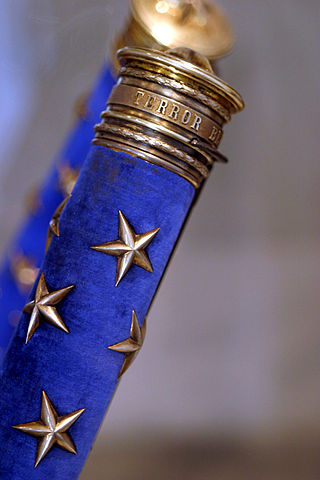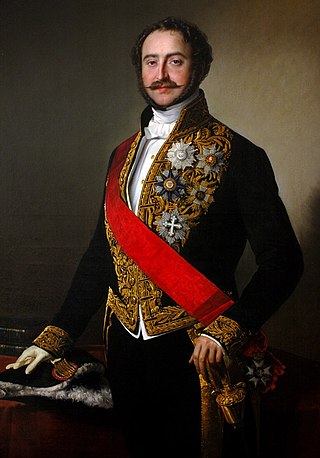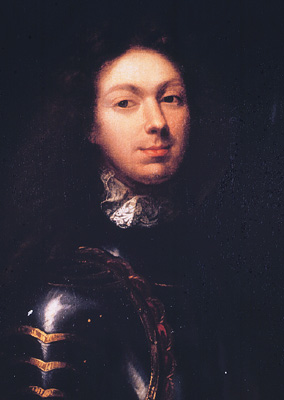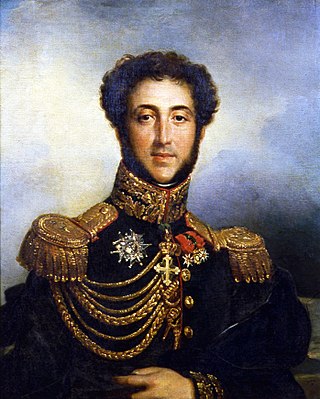
Marshal of France is a French military distinction, rather than a military rank, that is awarded to generals for exceptional achievements. The title has been awarded since 1185, though briefly abolished (1793–1804) and for a period dormant (1870–1916). It was one of the Great Officers of the Crown of France during the Ancien Régime and Bourbon Restoration, and one of the Grand Dignitaries of the Empire during the First French Empire.

Philibert, Count de Gramont (1621–1707), was a French courtier and soldier, known as the protagonist of the Mémoires written by Anthony Hamilton. He was a younger half-brother of Antoine III of Gramont and uncle of Catherine Charlotte de Gramont, princess of Monaco.

Agénor de Gramont, 10th Duke of Gramont was a French diplomat and statesman who also had the title Prince of Bidache.

The House of Gramont is the name of an old French noble family, whose name is connected to the castle of Gramont Basque province of Lower Navarre, France.

Antoine de Gramont, 4th Duke of Gramont, Duke of Guiche, was a Marshal of France.
A Colonel General was an officer of the French army during the Ancien Régime, the French Revolution, the Napoleonic era and the Bourbon Restoration.

Antoine de Gramont, 2nd Duke of Gramont,comte de Guiche,comte de Gramont,comte de Louvigny,Souverain de Bidache was a French military commander and diplomat. He served as Marshal of France from 1641, Viceroy of Navarre and Béarn, and Governor of Bayonne.

Héraclius de Gramont, 9th Duke of Gramont, 9th Duke of Gramont, Duke of Guiche, Prince of Bidache, etc. was a 19th-century French aristocratic Army general and courtier.

Louis de Gramont, 6th Duke of Gramont was Duke of Gramont and a French general in the War of Austrian Succession.

Antoine Louis Marie de Gramont, 8th Duke of Gramont, was a French military officer, diplomat and parliamentarian.

Armand Antoine Agénor de Gramont, 12th Duke of Gramont was a French nobleman, scientist and industrialist. He was known by the courtesy title of Duc de Guiche until 1925, when he succeeded his father as Duc de Gramont. He was the eldest son of Antoine Alfred Agénor de Gramont, 11e duc de Gramont and Marguerite de Rothschild.

Antoine I d'Aure de Gramont, viscount of Aure, count of Guiche, sovereign-lord of Bidache was a French courtier and general. He served as gentleman in ordinary to the king's chamber from 1559 to 1564, serving Henry II, Francis II and Charles IX in that role.

Antoine de Gramont, 1st Duke of Gramont (1572–1644). was a member of minor French nobility by birth. Created the 1st Duke of Gramont in 1643 by King Louis XIV he was automatically a Peer His granddaughter Catherine Charlotte de Gramont married Louis I, Prince of Monaco, making Antoine a direct ancestor of the present reigning Albert II of Monaco| ref= Though created the 1st Duke of Gramont, the creation of the title was not officially registered in Parliament before his death, so his son had to petition for a the dukedom to be recognised. His mother had been royal mistress of King Henri III of Navarre between 1582 and 1591.















